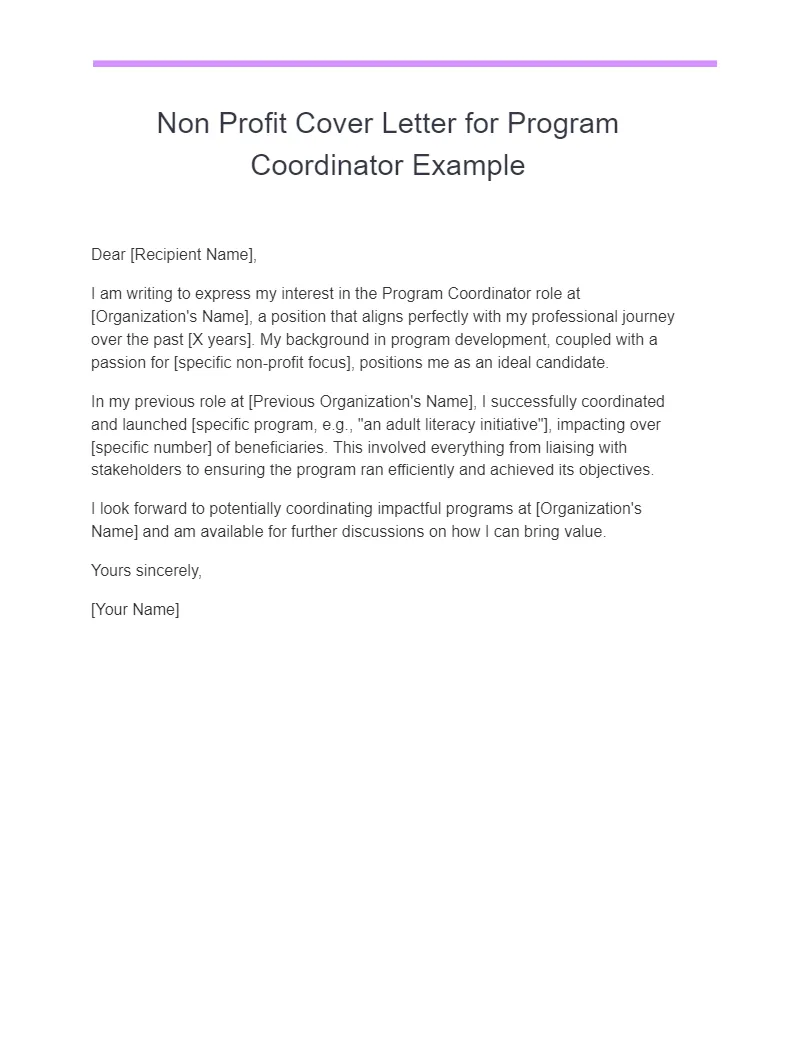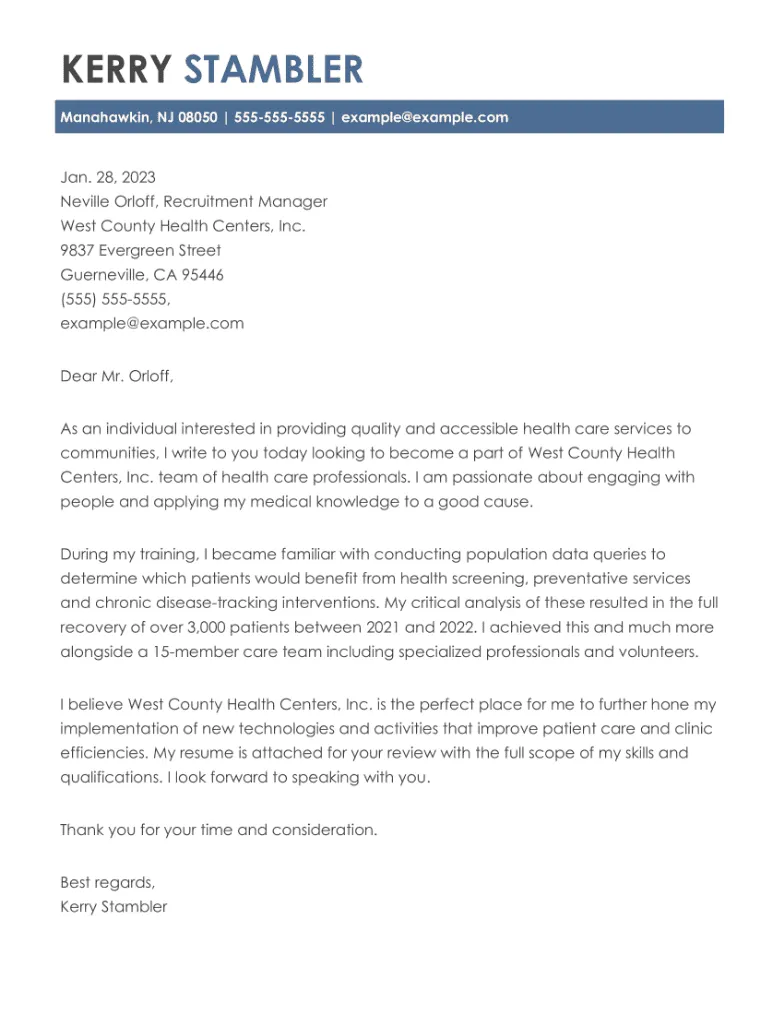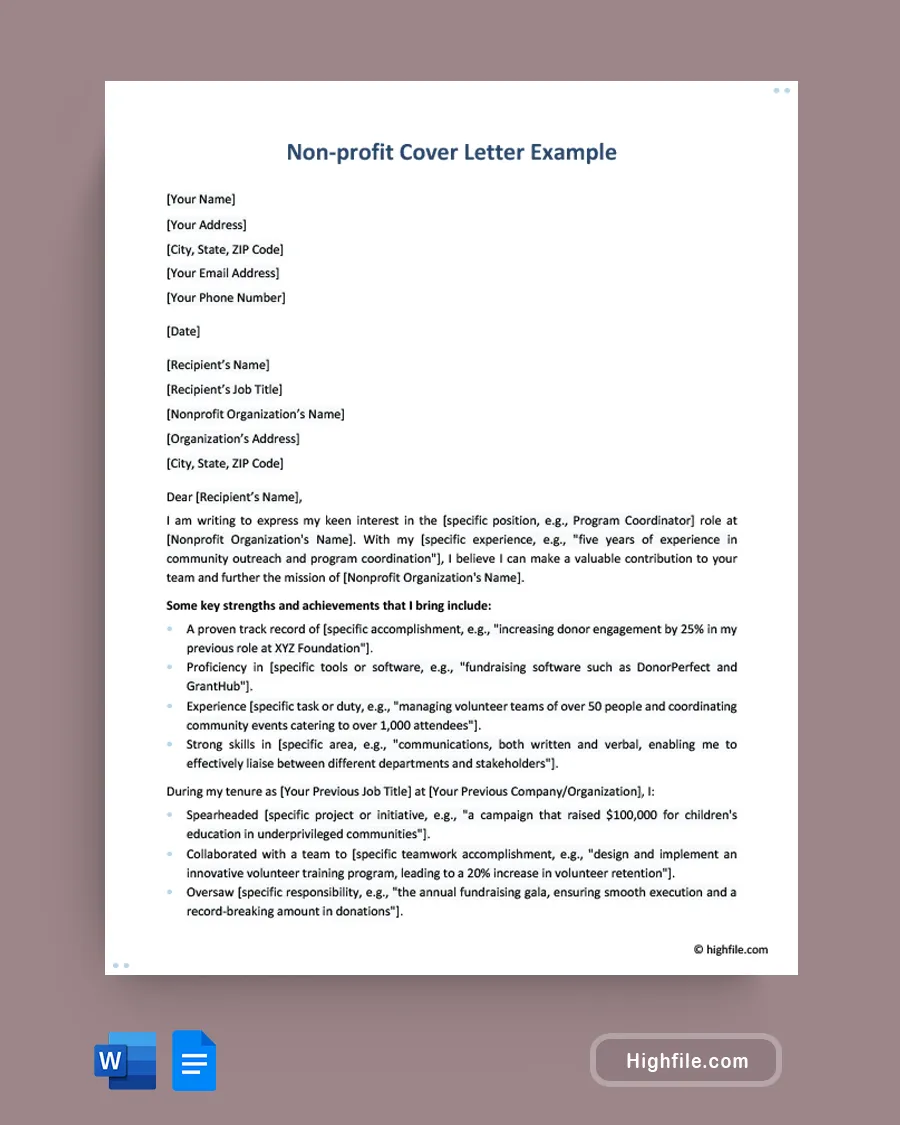Understanding the Nonprofit Cover Letter
A cover letter is your first introduction to a potential employer, and in the nonprofit sector, it’s your chance to showcase why you’re not just qualified but also passionate about their mission. Unlike a resume, a cover letter allows you to tell a story, to explain your motivations, and to connect your skills to the organization’s values. It’s where you can demonstrate your understanding of the nonprofit’s work and how you can contribute to its goals. This document serves as a crucial element in your job application and helps the hiring manager learn more about you, beyond your work experience. The best nonprofit cover letters often show more than just a list of skills; they exhibit a genuine interest in the organization and a clear understanding of its challenges and opportunities.
Your cover letter should be tailored to each specific nonprofit and the particular position you are applying for. Generic cover letters are easily spotted and often discarded. A well-crafted cover letter should highlight the specific requirements of the job and how your experience and skills align with those requirements. Use this opportunity to describe your enthusiasm for the mission and what makes you a good fit for the role. It is important to align yourself with the organization’s values and mention any previous work that reflects your care for the field.
Key Differences Nonprofit vs Corporate
When writing a cover letter for a nonprofit, it’s crucial to understand the fundamental differences between these organizations and their corporate counterparts. Nonprofits, by their nature, are driven by a mission to serve a cause or address a social issue. This mission-driven focus should be at the heart of your cover letter. While corporate cover letters often emphasize profit and market share, your nonprofit cover letter should showcase your alignment with the organization’s goals and your dedication to their cause. Many nonprofits value passion, empathy, and a strong sense of community. They want someone who is eager to make a difference.
Emphasize your values and any experience that demonstrates your commitment to similar causes. If your experience is in a corporate environment, it’s still possible to make a strong case by highlighting skills like project management or fundraising that are transferable to the nonprofit sector. The best way to approach this is to directly show them your desire to make a difference in the world. Show that you are driven to help the target demographic of the nonprofit by highlighting the key goals and your understanding of the organization’s strategies.
Highlighting Your Passion & Experience

Nonprofits are looking for candidates who are genuinely passionate about their mission. In your cover letter, express your enthusiasm by explaining why their cause resonates with you. Share any personal experiences that have shaped your desire to work for the organization or in the specific field. Demonstrate how your values align with the nonprofit’s mission. This connection can be a powerful way to differentiate yourself from other applicants. Discussing your experiences in volunteering, advocacy, or any work related to the nonprofit’s focus can be useful to enhance your chance of getting hired.
When discussing your experiences, focus on the accomplishments and results you achieved. Quantify your impact whenever possible, using numbers and data to illustrate your effectiveness. However, don’t just list your achievements; explain how these experiences have prepared you to contribute to the nonprofit’s goals. If you have relevant experience with other nonprofits, mention how the past role aligns with the goals of the current one. This helps demonstrate that you can bring real value to the position and that you are genuinely interested in making a difference. This is where you make the case that you are not just another applicant but a dedicated individual who cares about the cause.
Showcasing Relevant Skills
Your cover letter should clearly articulate the skills and experiences that make you a good fit for the role. Go beyond simply listing your skills; provide concrete examples of how you have used these skills in previous roles. Align your skills with the specific requirements outlined in the job description. Use the language of the job description to show that you understand what the organization is looking for. Be sure to tailor your cover letter to match the most important requirements of the job. This shows the hiring manager that you have taken the time to understand the role and how you can contribute.
If the job requires strong communication skills, describe a situation where you successfully communicated complex information to a diverse audience. If the job involves fundraising, share your past fundraising success. Be sure to quantify your achievements whenever possible. Even if your experience isn’t directly in the nonprofit sector, emphasize transferable skills like project management, leadership, or financial literacy, if they are relevant. Remember that nonprofits need various skills to operate successfully, so highlighting a combination of hard and soft skills increases your value as a candidate. Be specific about the results you have achieved and make sure they align with what the organization is seeking.
Tailoring to the Nonprofit’s Mission
A generic cover letter won’t cut it in the nonprofit world. You must tailor your letter to each specific organization. Research the nonprofit’s mission, programs, and values. Visit their website, read their annual reports, and understand their current initiatives. Demonstrate your understanding of their work by referencing specific projects or accomplishments in your letter. This shows that you’ve done your homework and that you’re genuinely interested in contributing to their mission. It is important that the applicant shows the organization that he/she can assist in their goals.
Show how your skills and experiences align with the nonprofit’s goals. For example, if the organization emphasizes community outreach, highlight your experience in this area. If they value innovation, discuss any innovative ideas you have or your experience implementing new strategies. Use the organization’s language to show that you understand their culture. This shows that you understand not only what the organization does but how it operates. By aligning your letter with the organization’s unique characteristics, you increase your chances of making a memorable impression and securing an interview. Show the organization that you have a plan for the role.
Writing a Strong Closing

The closing of your cover letter is your final opportunity to leave a lasting impression. Express your enthusiasm for the position and reiterate your interest in contributing to the nonprofit’s mission. Include a call to action, inviting the hiring manager to contact you for an interview. Make it clear that you are eager to discuss how you can help the organization achieve its goals. Offer to provide additional information or answer any questions they may have. This shows your proactive approach and commitment to the role. Be polite and professional in your closing.
Thank the hiring manager for their time and consideration. Restate your contact information, including your phone number and email address. Proofread your letter carefully to ensure there are no grammatical errors or typos. A well-written closing reflects your attention to detail and professionalism. By ending your cover letter with a strong closing, you can motivate the hiring manager to take the next step and consider you for the position. Remember, your goal is to make it as easy as possible for them to reach out to you, and closing on a positive and proactive note is key.
Following Up on Your Application
After submitting your cover letter and resume, it’s important to follow up on your application. Sending a brief thank-you email a week after the deadline can be a good way to reiterate your interest in the position and show your professionalism. In your email, restate your enthusiasm for the role and briefly mention something specific you discussed in your cover letter. This helps the hiring manager remember you and your qualifications. If you haven’t heard back within a reasonable timeframe, you can send a follow-up email to inquire about the status of your application.
When following up, keep your tone professional and respectful. Avoid being overly persistent or demanding. Your goal is to express your continued interest in the position and to reaffirm your qualifications. If the nonprofit is open to it, you can also connect with them on social media platforms such as LinkedIn. This will help you keep track of their current initiatives. Remember that following up is a way of staying on their radar and showing your genuine interest in the role. While it’s important to be proactive, be sure to respect their time and processes, and always be gracious in your communications.
